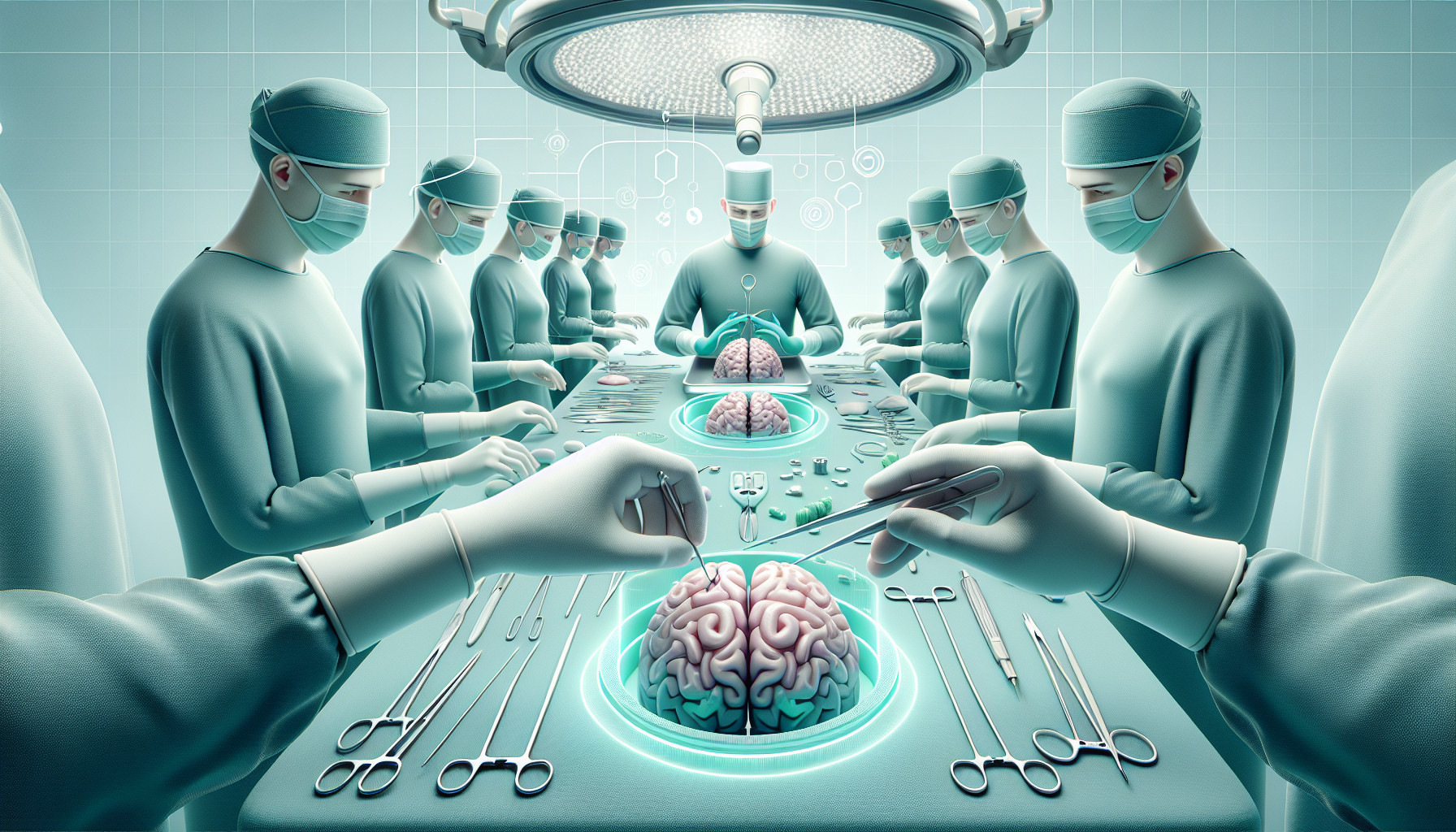Our Summary
This research paper discusses a case where a patient undergoing deep brain stimulation treatment for Parkinson’s disease experienced a condition called pneumocephalus, where air gets into the cranial cavity. This caused the patient’s brain to shift during the operation.
The doctors noted that they were not exactly at the intended target for the operation because of this shift. They faced a dilemma because removing the guide-tube (a tool used to reach the correct spot in the brain) to adjust for this shift could cause more movement and further deviation from the planned route.
To solve this issue, they decided to leave the guide-tube where it was and instead moved the final deep brain stimulation lead to a different location that was closer to the intended target.
This case highlighted the importance of developing surgical techniques that can reduce brain shift during surgery. The doctors acknowledged that the removal of the guide-tube could worsen brain shift, so they suggested that the surgical team should keep it in place to maintain the advantage provided by the initial position. The paper implies that more research is needed in this field to improve surgical outcomes.
FAQs
- What is intra-operative pneumocephalus in the context of deep brain stimulation surgery for Parkinson’s disease?
- What surgical techniques can be employed to minimize brain shift during deep brain stimulation surgery?
- How can the removal of a guide-tube cannula affect the brain shift during surgery?
Doctor’s Tip
Helpful tip: Before undergoing brain surgery, it is important for patients to understand the risks and potential complications involved. It is also important to follow all pre-operative and post-operative instructions provided by your healthcare team to ensure the best possible outcome. Additionally, make sure to communicate openly with your healthcare team about any concerns or questions you may have.
Suitable For
Patients who are typically recommended for brain surgery include those with brain tumors, epilepsy that cannot be controlled with medication, Parkinson’s disease that is not responding to other treatments, arteriovenous malformations, aneurysms, traumatic brain injuries, and certain movement disorders. Additionally, patients with hydrocephalus, brain abscesses, and certain types of infections may also be recommended for brain surgery. Each patient’s case is unique and should be carefully evaluated by a team of specialists to determine the best course of treatment.
Timeline
Before brain surgery:
- Patient undergoes pre-operative evaluations and consultations with neurosurgeon.
- Patient may undergo imaging studies such as MRI or CT scans to determine the location and extent of the brain lesion.
- Patient may be prescribed medications to manage symptoms and reduce the risk of complications during surgery.
During brain surgery:
- Patient is placed under general anesthesia.
- Surgeon makes an incision in the scalp and drills a small hole in the skull to access the brain.
- Surgeon uses specialized tools and techniques to remove or treat the brain lesion.
- Intra-operative monitoring may be used to ensure the safety and accuracy of the procedure.
After brain surgery:
- Patient is monitored closely in the recovery room for any signs of complications.
- Patient may stay in the hospital for a few days to a week for observation and recovery.
- Patient may experience pain, swelling, and other side effects from the surgery.
- Patient may undergo physical therapy or rehabilitation to regain strength and function.
- Patient follows up with the surgeon for post-operative evaluations and monitoring of recovery progress.
What to Ask Your Doctor
What are the potential risks and complications associated with brain surgery?
How will the success of the surgery be measured and monitored?
What is the expected recovery process after brain surgery?
What type of anesthesia will be used during the surgery?
How long will the surgery take and what is the expected length of hospital stay?
What are the alternative treatment options to brain surgery?
How experienced is the surgical team in performing this specific type of brain surgery?
Will there be any long-term effects or implications of the surgery on my cognitive or physical functioning?
What post-operative care and follow-up appointments will be needed after the surgery?
What is the likelihood of needing additional surgeries or treatments in the future after brain surgery?
Reference
Authors: Martinez-Nunez AE, Wong JK, Hilliard JD, Foote KD, Okun MS. Journal: Tremor Other Hyperkinet Mov (N Y). 2024 Apr 10;14:18. doi: 10.5334/tohm.873. eCollection 2024. PMID: 38617832
